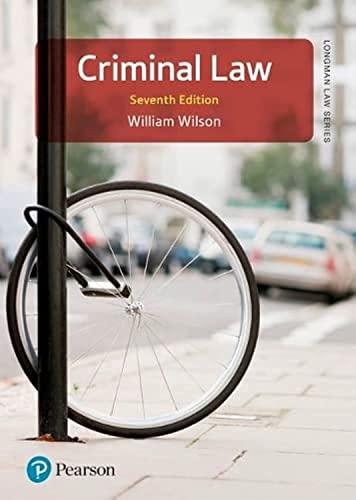Question
Oakes Test Application Assignment The Facts Ontario requires all persons who drive motor vehicles to hold a driver's licence. Since 1974, each licence has borne
Oakes Test Application Assignment
The Facts
Ontario requires all persons who drive motor vehicles to hold a driver's licence. Since 1974, each licence has borne a photograph of the licence holder, subject to exemptions for people who objected to having their photographs taken on religious grounds. Religious objectors were granted a nonphoto licence called a Condition Code G licence.
In 2003, the Province passed a new law that made the photo requirement universal. The photograph taken at the time of issuance of the licence is placed in the Province's facial recognition data bank. There were about 450 Condition Code G licences in Ontario, 56 percent of which were held by members of Hutterian Brethren colonies. The Hutterian Brethren sincerely believe that the Second Commandment prohibits them from having their photograph willingly taken and objected to having their pictures taken on religious grounds.
The Province proposed two measures to decrease the impact of the universal photo requirement but, since these measures still required that a photograph be taken for placement in the Province's facial recognition data bank, they were rejected by the members of the Wilson Colony. They proposed instead that no photograph be taken and that nonphoto driver's licences be issued to them marked "Not to be used for identification purposes".
The members of the Hutterian Brethren colony challenged the new law, on the grounds that it infringed their freedom of religion (s. 2(a) of theCharter of Rights and Freedoms). They argued that if members could not obtain driver's licences, the viability of their communal lifestyle would be threatened. The Province argued that the adoption of the universal photo requirement was connected to a new system aimed at minimizing identity theft associated with driver's licences and that the new facial recognition data bank was aimed at reducing the risk of this type of fraud.
You are the judge. Both sides agree that this law infringes s. 2(a) of theCharter of Rights and Freedoms. You must now determine if the infringement can be justified as a reasonable limit under s. 1 of the Charter by applying the Oakes test to it.
Explain how you would apply all 5 steps of the Oakes test to the SGO Act and state whether you think it should be struck down or allowed to continue as law.
(Note: This case is based on an actual situation. The judges of the Supreme Court were split 6 to 3 on the application of the Oakes Test, meaning there are strong arguments for either position.)
Oakes Test
Write an essay based on those questions. The essay should be about 100 - 250 words, Max.
- Is the limit to theCharter prescribed by law?
- Is the objective of the law pressing and substantial?
- Is the legislation proportional? There are three parts to this test. They are:
- Rational Connection - Is the limitation of theCharter right rationally connected to the objective of the law?
- Minimal Impairment - Is theCharter right impaired as little as possible? Is there an approach the government could use that would impair it less?
- Proportionate Effect - Is the limit on the right or freedom proportionate to the importance of the law's purpose? Do the benefits of the law outweigh the negative effects of the limitation.
Step by Step Solution
There are 3 Steps involved in it
Step: 1

Get Instant Access to Expert-Tailored Solutions
See step-by-step solutions with expert insights and AI powered tools for academic success
Step: 2

Step: 3

Ace Your Homework with AI
Get the answers you need in no time with our AI-driven, step-by-step assistance
Get Started


